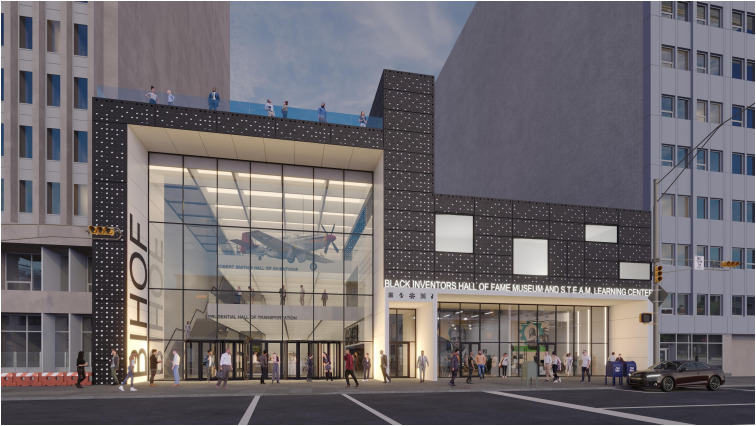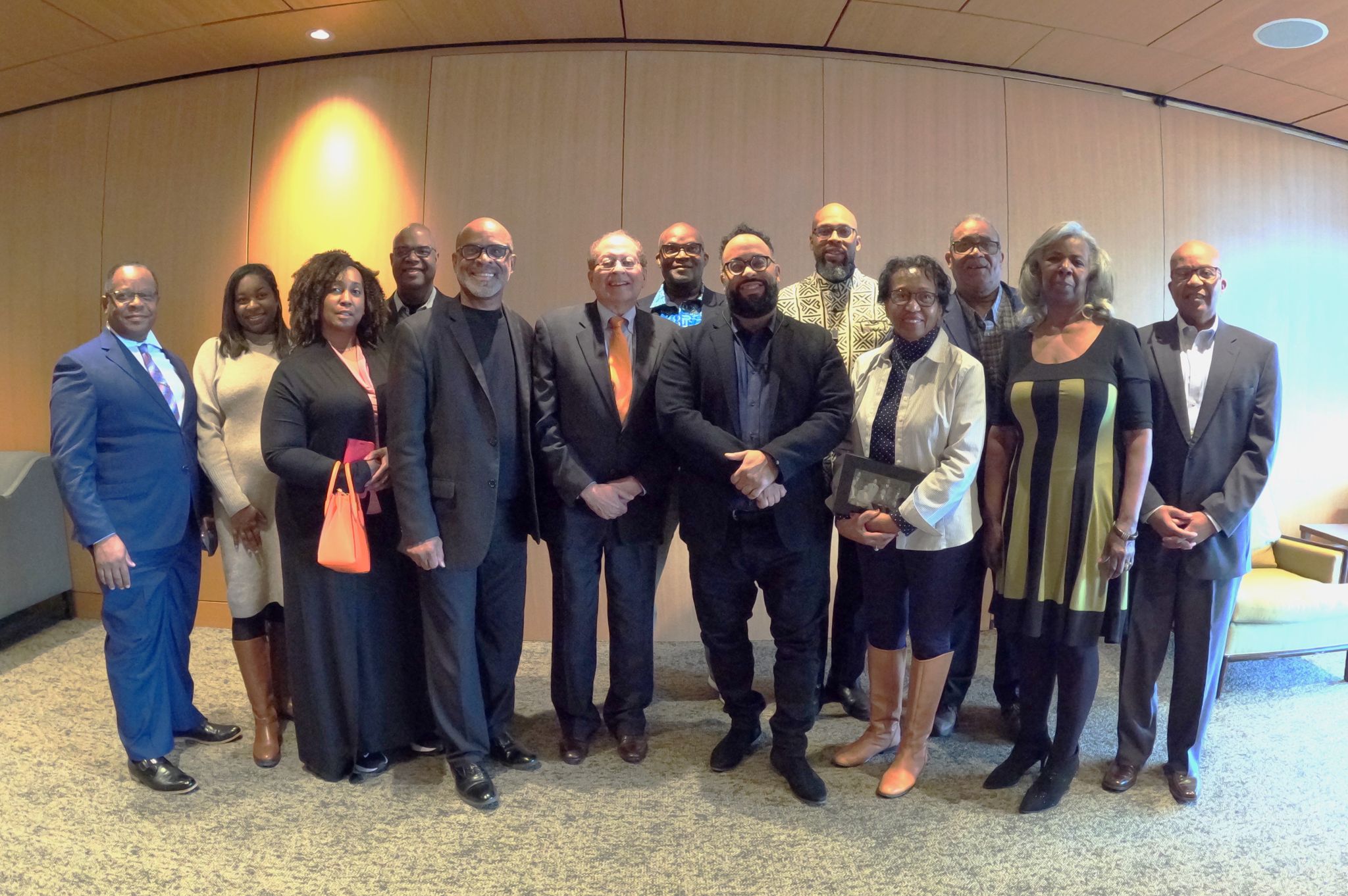“The African American experience is full of innovators who have done creative and productive things, but there was no pathway to patents.” – James Howard, Executive Director, Black Inventors Hall of Fame Museum
 Some of the earliest chapters in the story of U.S. innovation have been written by Black Americans who not only advanced the state of industry in our country, but also fought to ensure that they were credited for what they achieved. Within the next few years, the city of Newark, NJ, will be the home of a museum properly paying homage to the historic contributions that these inventors have made to medical science, telecommunications, transportation and more.
Some of the earliest chapters in the story of U.S. innovation have been written by Black Americans who not only advanced the state of industry in our country, but also fought to ensure that they were credited for what they achieved. Within the next few years, the city of Newark, NJ, will be the home of a museum properly paying homage to the historic contributions that these inventors have made to medical science, telecommunications, transportation and more.
Recognizing the Contributions of Black Inventors to American Innovation
The Black Inventors Hall of Fame Museum is the brainchild of James Howard, a professional industrial designer who has spent more than four decades designing more than 400 commercial products and is listed as an inventor on more than 20 U.S. patents. Howard Design Agency, which he founded and ran for 15 years, became one of the nation’s top-grossing industrial design firms, working with several major consumer product companies and academic institutions.
Howard was first moved to consider a project honoring black inventors in the summer of 2016, when he picked up an issue of TIME in the check-out lane of a ShopRite in Newark featuring an article listing the top 100 inventors in U.S. history. Dismayed to find nearly zero black inventors mentioned, Howard remembers seeing entries for open heart surgery inventor Dr. Daniel Hale Williams and blood bank developer Dr. Charles Drew near the back of the issue. This memory stuck with Howard until a June 2020 interview with Dale Caldwell for the NJ-based local TV show “Family Business World,” which highlighted Howard’s career as well as the plight of Black inventors. After the recording had finished, Caldwell asked Howard if he had considered creating an institution to commemorate Black inventors, and this question encouraged Howard to plan a public space to honor both past and present successes from this community.
“The African American experience is full of innovators who have done creative and productive things, but there was no pathway to patents,” Howard said. While patents are important for protecting innovations, they’re not required to qualify as an innovator for inclusion in the museum. Nothing typifies Howard’s vision in this regard better than the P-51 fighter plane that will hang above the entryway of the museum to honor the Tuskegee Airmen, the all-Black squadron of fighter pilots whose innovative flight patterns made massive contributions to the Allied war effort during World War II.
Exhibition Halls Honor Contributions to Telecommunications, Transportation and Medical Science

The Black Inventors Hall of Fame Museum Board
The first of four exhibit halls being planned for the museum is the Elijah J. McCoy Transportation Hall, which will house a locomotive train featuring McCoy’s automatic lubricating cup that was adopted across the railroad industry in the late 1800s. This innovation both prevented locomotive engines from overheating and eliminated hours of work required to manually lubricate engines at railroad depots. While McCoy’s lubricating cup employed a simple design that was easy to replicate, the quality of “the real McCoy” as the best version of the lubricating cup is a big reason why that phrase has entered American consumer folklore. Despite earning an engineering degree from Scotland’s University of Edinburgh, McCoy could only find work in the United States as a railway fireman and had to fight throughout his career to control the manufacturing of his own invention. “You can multiply Elijah McCoy’s story one thousand times over,” Howard said, noting that McCoy’s story personified the plight of black inventors who were denied franchising opportunities and were forced to create their own manufacturing operations.
The second floor of the Black Inventors Hall of Fame Museum will be dedicated to the many contributions Black inventors have made to medical science. The namesake for this second hall is Dr. Patricia Bath who developed laserphaco cataract surgery, creating a more effective technique addressing a medical condition that disproportionately affects the Black community. Other innovators honored in this hall will include Drs. Drew and Williams, as well as more contemporary scientists like Dr. Hadiyah-Nicole Green, who has developed a nanotechnology cure for cancer that has been shown to succeed in clinical trials with mice without observable side effects.
The museum’s third exhibition hall will be the Granville T. Woods Telecommunications Hall, named after the inventor who Howard believes is the most significant Black inventor in American history for his creation of the induction telegraph, as well as his contributions to electrical systems for railroad and trolley cars. Other American inventors to be honored in this hall will include Jesse Russell, an early developer of cellular and wireless networks, and Dr. Gladys West, whose 42-year career with the U.S. Navy included refining mathematical algorithms that improved the effectiveness of Global Positioning System (GPS) tracking solutions.
Soft Opening to Take Place in Late 2025
The fourth exhibition hall is titled Legends Hall, which Howard envisions as a home for rotating exhibits featuring contemporary inventors as well as historic items on loan from other institutions. The current plans for the museum also include a 250-seat auditorium for showings of documentaries highlighting the stories of black inventors, as well as a speaker series where scholars of all backgrounds will be invited to give monthly talks on intellectual property and invention. The building will also house a science, technology, engineering and math (STEM) learning center offering tuition-free classes for students and provide access to makerspace and startup incubator resources.
Thus far into his project, Howard’s project has already received the blessing of the National Museum of African American History and Culture, a Smithsonian museum that moved into a permanent home in Washington, D.C. in 2016. Having completed the building program, Howard is currently speaking with potential sponsors and local officials to finalize a space in Newark that will house the museum. One site on Broad Street adjacent to Tubman Square has been discussed, although an alternative proposal for a film museum at that site has arisen in recent weeks; Howard indicates that he’s contemplating proposals for sharing the space. Currently, Howard’s goal is to have the museum set for a soft opening during the later stages of 2025, with a full public opening of the institution sometime during 2026.

![[IPWatchdog Logo]](https://ipwatchdog.com/wp-content/themes/IPWatchdog%20-%202023/assets/images/temp/logo-small@2x.png)

![[Advertisement]](https://ipwatchdog.com/wp-content/uploads/2024/04/Patent-Litigation-Masters-2024-sidebar-early-bird-ends-Apr-21-last-chance-700x500-1.jpg)

![[Advertisement]](https://ipwatchdog.com/wp-content/uploads/2021/12/WEBINAR-336-x-280-px.png)
![[Advertisement]](https://ipwatchdog.com/wp-content/uploads/2021/12/2021-Patent-Practice-on-Demand-recorded-Feb-2021-336-x-280.jpg)
![[Advertisement]](https://ipwatchdog.com/wp-content/uploads/2021/12/Ad-4-The-Invent-Patent-System™.png)







Join the Discussion
6 comments so far.
Dr. Garthen leslie
August 14, 2023 09:56 amAs I have been researching this very topic, I think a place dedicated to the Black Inventor is appropriate as it would put a large resource in one pace for research, learning, and general appreciation. I am interested in potential career opportunities and would love to share my research. I think my research and your efforts are one in the same.
Jack Lyle
August 8, 2023 12:24 pmI hope you guys considered using an African American architect firm for this project. We have a few here in DC One of which I worked for. We designed the Capital One center, the Nationals baseball stadium and the convention center here in DC. All African American firm.
Anon
June 6, 2023 02:30 pmNot to be a naysayer, but “celebrating” with a separate Hall of Fame seems like exactly the wrong thing to do, setting in concrete a racial divide.
We ALL should be clamoring for ONE Hall of Fame.
We do NOT need Intersectionality-type divisions.
It would be perfectly reasonable to celebrate the integration (and that includes acknowledgment of past misdeeds and continuing efforts to rectify) in the ONE Hall of Fame — for ALL lovers of innovation.
Elizabeth Romanaux
June 6, 2023 11:59 amThis is so exciting. I hope to be one of the first to visit.
Guy Letourneau
June 5, 2023 08:18 amHat tip to Lewis Temple, a manumitted (freed) slave and blacksmith who fled the South to New Bedford, MA, where in 1848he invented (but did not patent) the togglehead harpoon. Previous harpoon tips looked like arrow heads with one or two barbs. Temple’s improved tip provided a double barb on a pivotable shank that on a good, deep strike by the harpooneer would rotate to a “T” within the muscle of the whale, providing far superior holding power than fixed barb designs. Temple’s invention was nicknamed a “Temple iron,” and was broadly copied along both coasts, remaining in use even through the decline of the American whaling industry in the 1920s.
Pro Say
June 4, 2023 09:41 pmBravo! This is a wonderful, long-needed museum.
Once open, I’ll be there next time I’m in Jersey. Ideally, Howard, in order to assure the greatest exposure (and innovation encouragement) to everyone unable to visit, you’ll post to the Museum’s website (a) video(s) taking viewers through the Museum.
Sadly, however, America remains stuck in an innovation-crippled time period where all innovators — including Black Americans — are unable to obtain (or hold on to) patents for inventions including life-saving diagnostics and cutting-edge (and national security protecting) computer / Internet-required inventions.
As the result of the misguided (and misused) AIA / IPRs / PGRs, SCOTUS, CAFC, and even our very own do-nothing Congress.